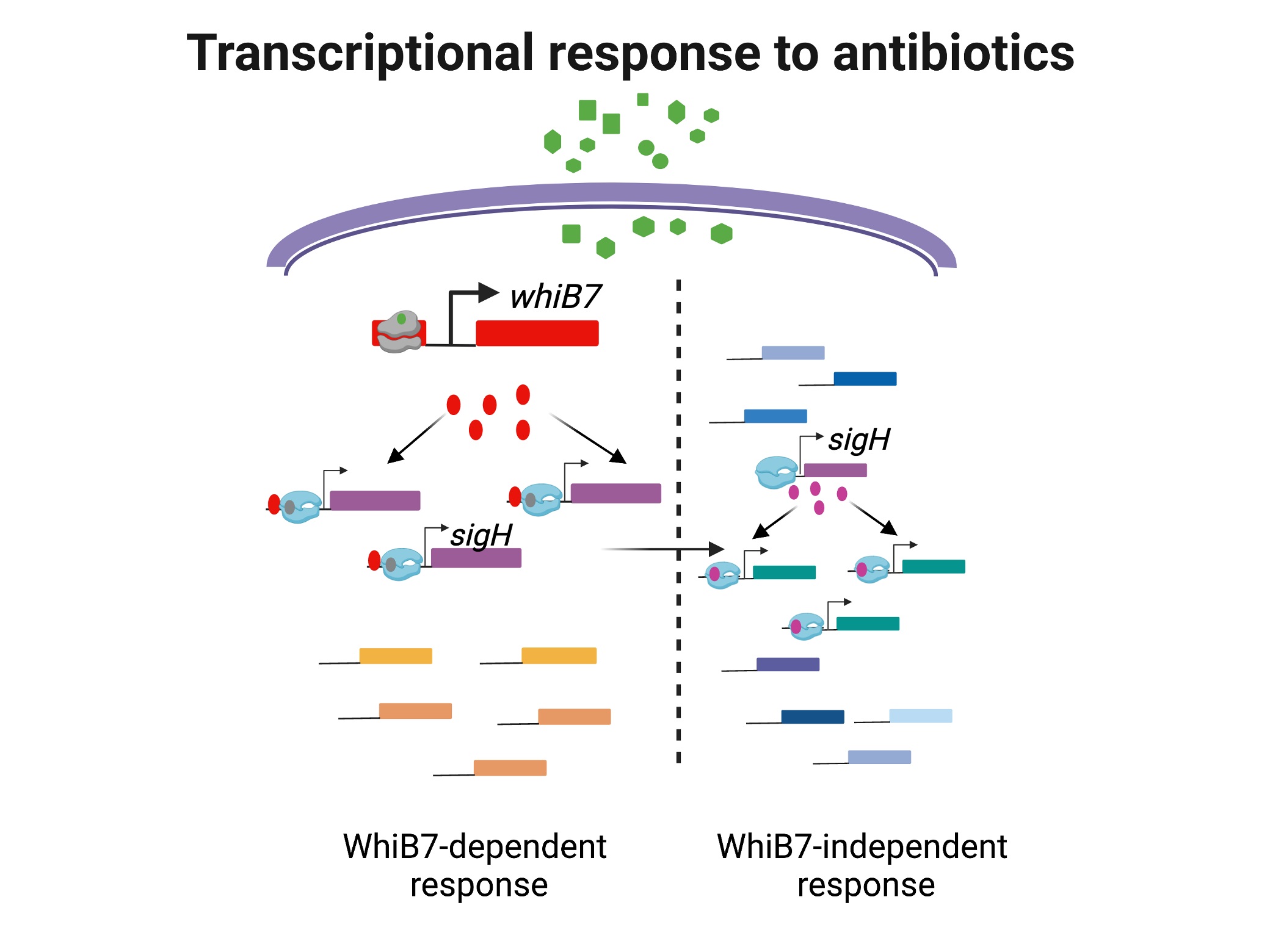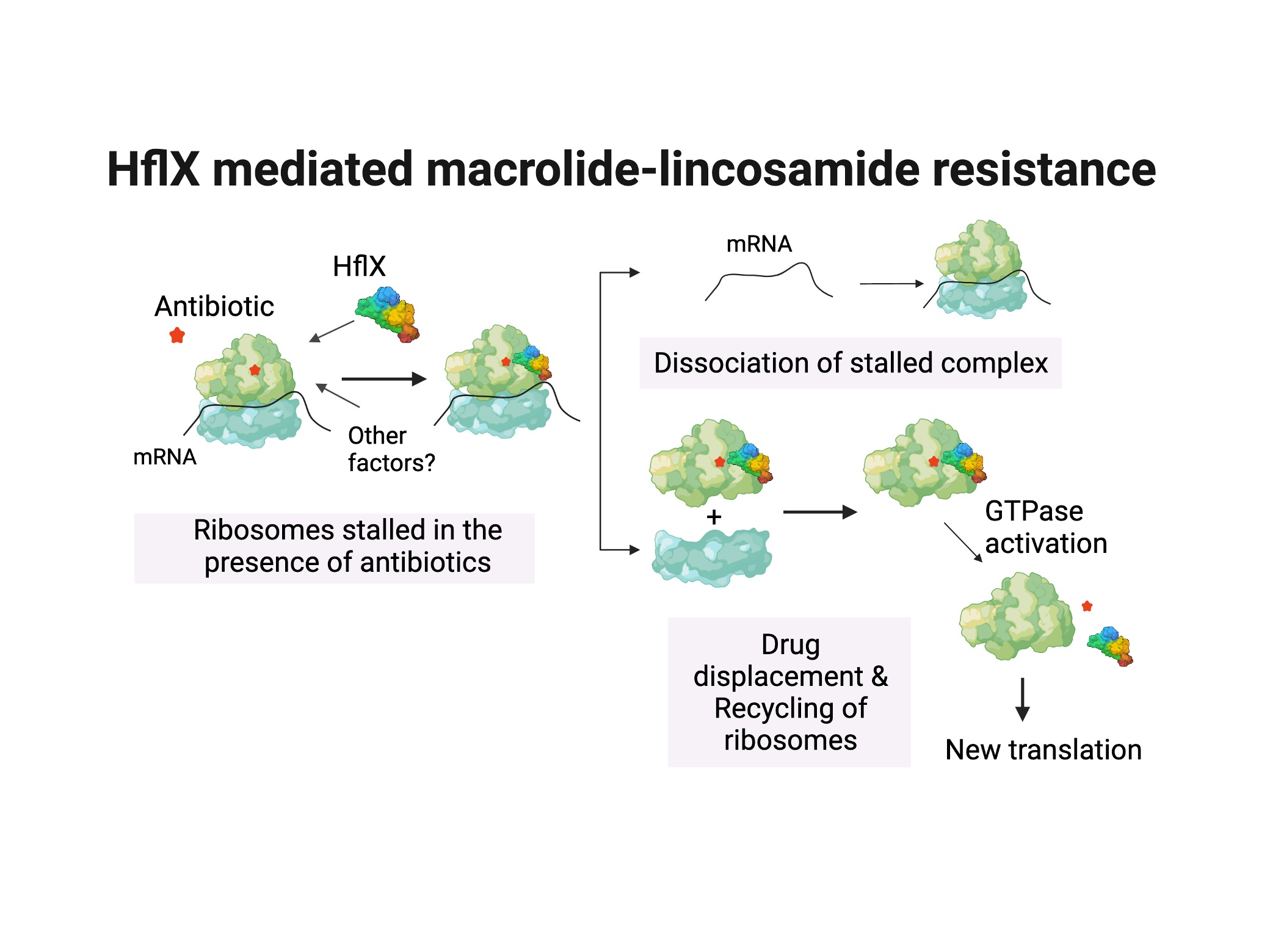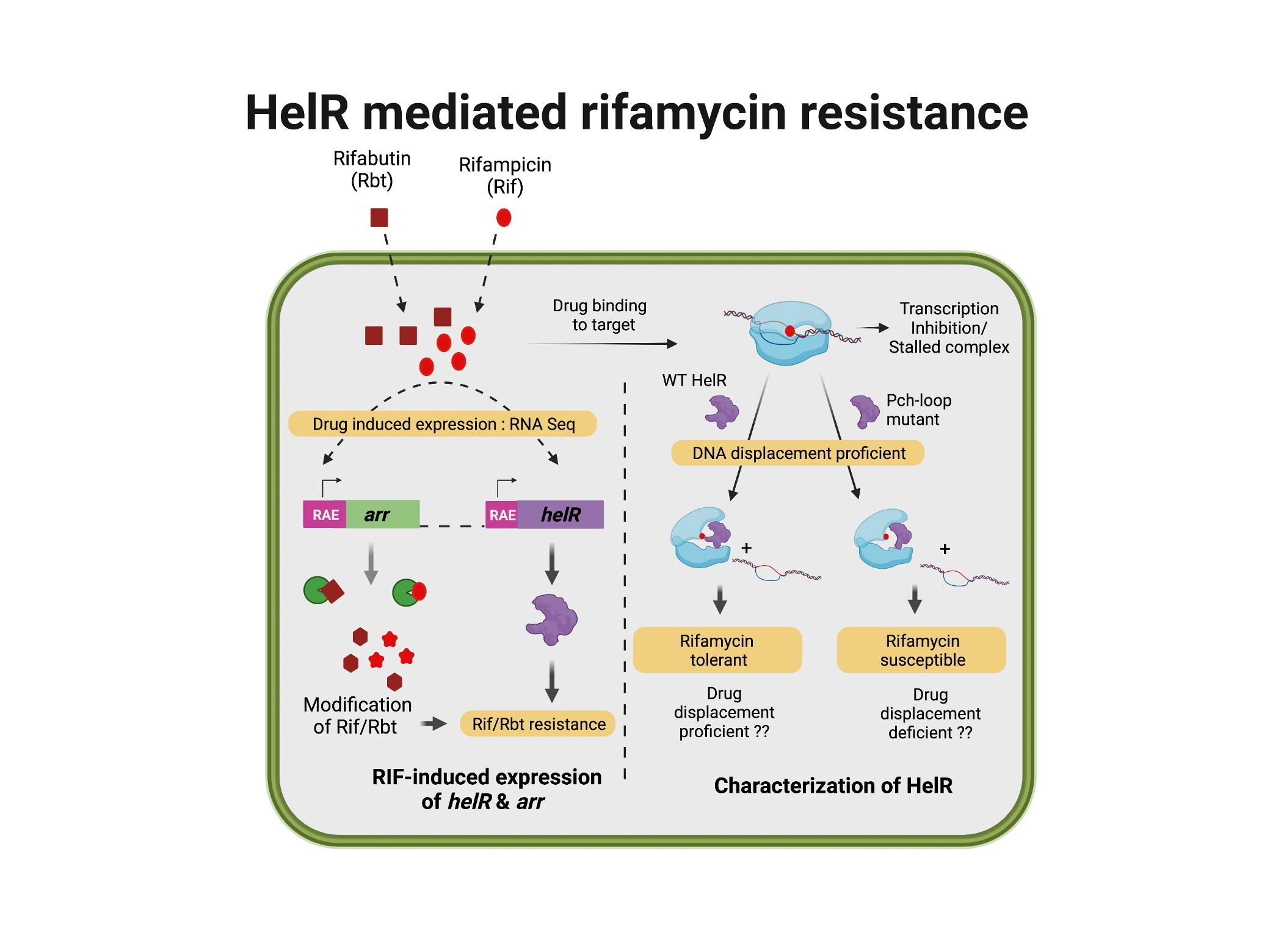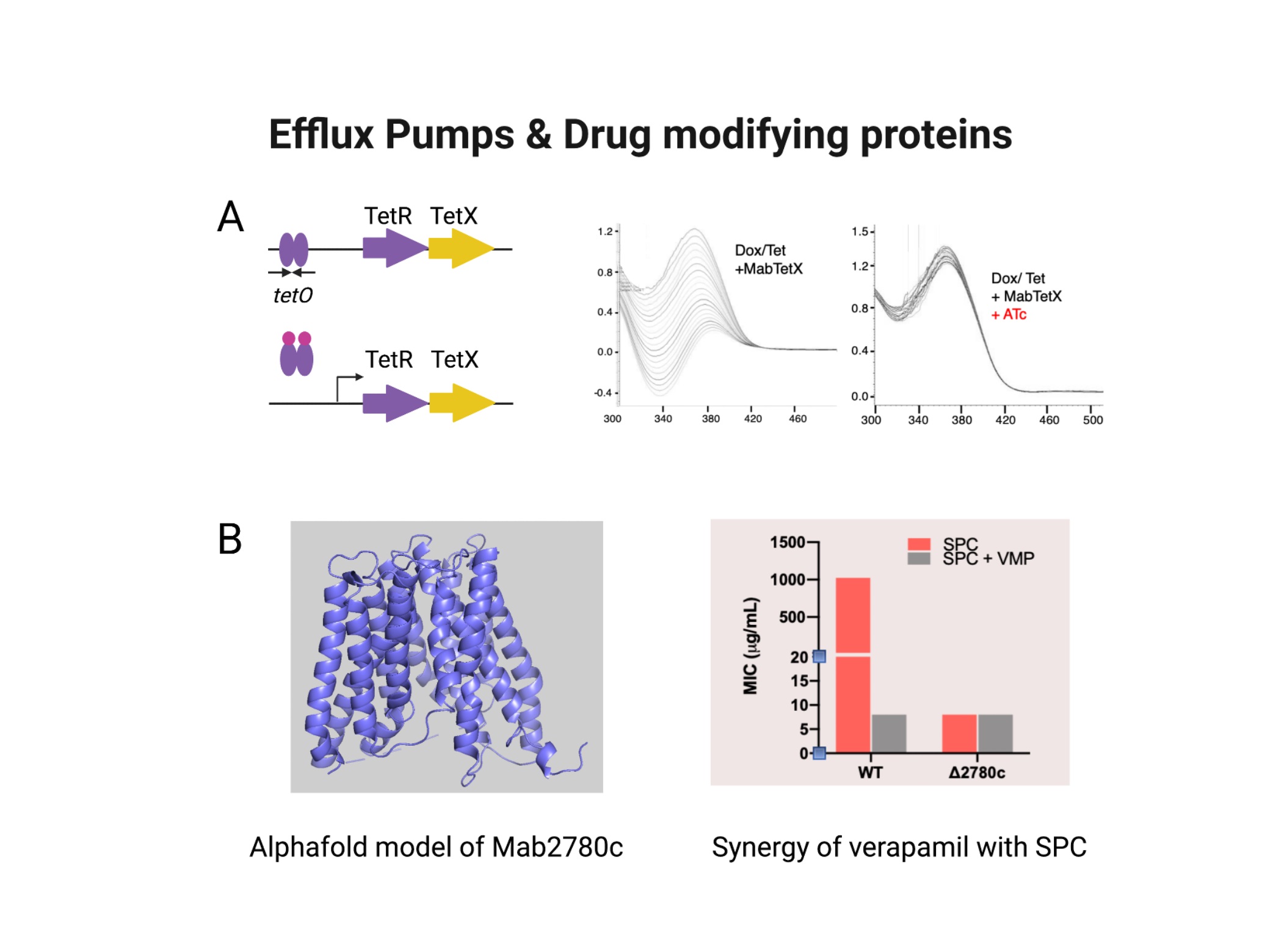1. Systems level understanding of changes that accompany exposure of M. abscessus to antibiotics
Exposure to antibiotics causes a global transcriptional reprogramming within bacteria and results in induction of genes that confer drug resistance. The induction of genes that confer resistance to structurally diverse ribosome-targeting antibiotics is funneled through the induction of a single transcriptional activator, WhiB7, by antibiotic- stalled ribosomes. This poses a severe restriction in M. abscessus therapy as treatment with one ribosome-targeting antibiotic confers resistance to all other ribosome-targeting antibiotics. We investigate the intricacies of the WhiB7 regulatory circuit as well as the cross-talk between WhiB7 dependent and independent components.
Additionally, we also investigate the role of alternate sigma factors and WhiB proteins in the regulatory networks in M. abscessus.

2. Mechanisms of HflX & ABCF mediated resistance to macrolide-lincosamide antibiotics
M. abscessus HflX is a ribosome binding protein that dissociates antibiotic-stalled 70S ribosomes into 50S and 30S subunits. We investigate the mechanisms of target recognition and antibiotic resistance by HflX as well as subsequent recycling of the post-dissociated 50S complexes using a combination of biochemistry and cryo-EM microscopy.
We also study the role of the ribosome protection ABCF proteins in M. abscessus drug resistance.
3. Mechanisms of HelR mediated resistance to rifamycins
Exposure of M. abscessus to rifamycins results in induction of Mabarr and MabHelR. While MabArr ribosylates several rifamycins and prevents drug binding to RNA polymerase, HelR is an RNA polymerase binding protein. HelR presumably recognizes RIF-stalled initiation complexes and functions by displacement of the complex and / or release of bound drug. We investigate the molecular intricacies of HelR mediated resistance.
Additionally, we also investigate the induction of arr and helR that proceeds using a common mechanism which can potentially target the rifamycin resistance of M. abscessus.

4. Efflux pumps and drug modifying proteins in M. abscessus drug resistance
A. Tetracycline modification by MabTetX:
We identified MabTetX, a flavin monooxygenase induced upon exposure to the tetracycline family of antibiotics, and showed it to confer high-level resistance to tetracycline and doxycycline by drug modification. We are exploring small molecule inhibitors that can interfere with MabTetX expression and/or function.
B. Spectinomycin efflux by Mab2780c:
Using functional genetics assays we identified Mab2780c, an MFS efflux pump, is the primary determinant of high-level SPC resistance in M. abscessus. Verapamil, an efflux pump inhibitor can reduce the MIC of SPC to that of a ▲Mab2780c mutant potentially reclaiming the use of SPC against M. abscessus infections.